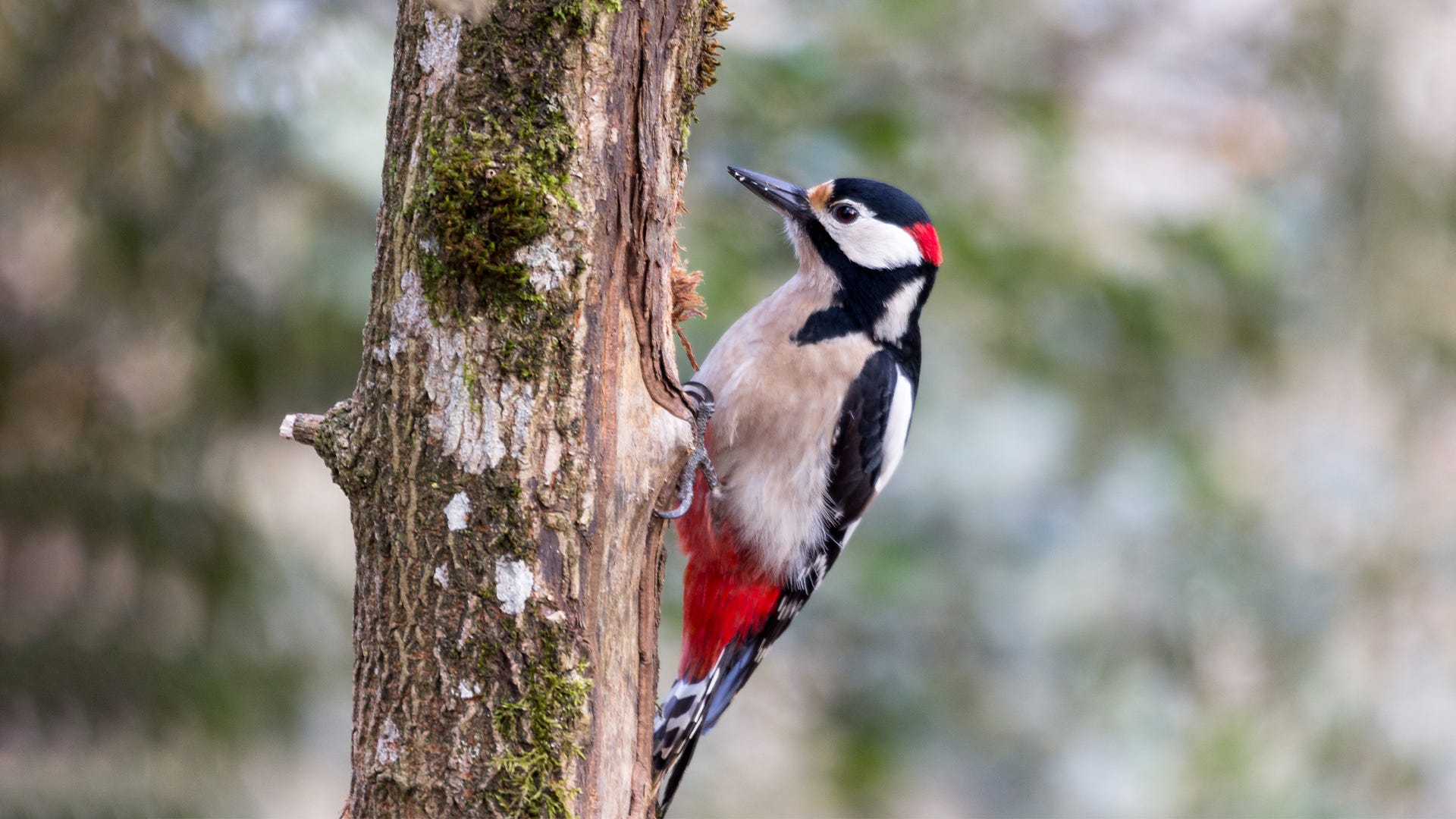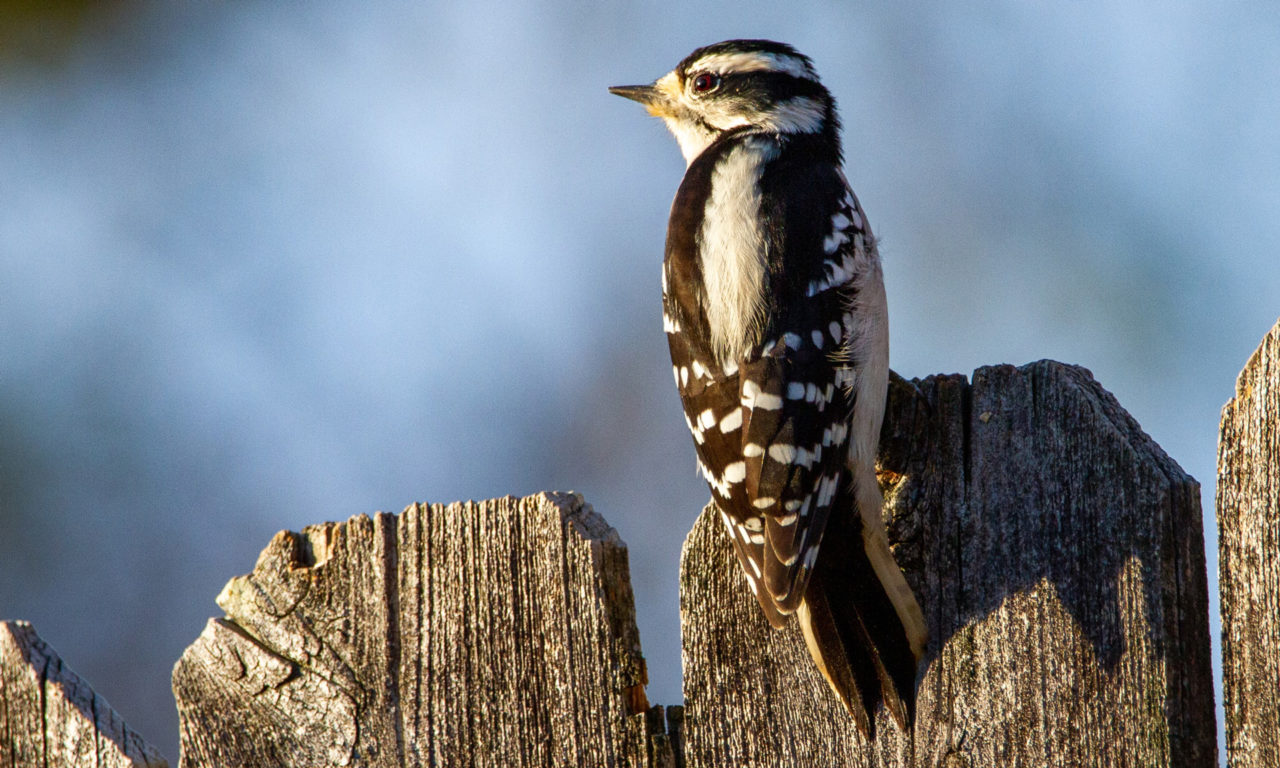Observing Woodpeckers in Florida: Types Variety and Distribution
Woodpeckers: A Comprehensive Guide to Recognizing These One-of-a-kind Birds
Woodpeckers, with their distinct habits and physical qualities, have long astounded the inquisitiveness of ornithologists and nature lovers alike. From their rhythmic drumming resembling via the woods to their remarkable adjustments for scaling tree trunks with simplicity, these birds present a fascinating research in bird biology. What genuinely sets woodpeckers apart is not simply their striking appearance yet likewise their vital duty in preserving the fragile balance of ecosystems. As we discover the elaborate makeup, diverse varieties, and ecological value of woodpeckers, a deeper admiration for these distinct birds and the enigmas they hold unfolds.

Woodpeckers' Drumming Habits
Woodpeckers exhibit a balanced and specific drumming habits that serves numerous necessary functions in their day-to-days live. This habits is largely linked with communication, region protection, and foraging. The distinct drumming noise is created by the fast pecking of their beaks versus difficult surfaces such as tree trunks, branches, or perhaps steel items.
Communication is an essential facet of woodpecker behavior, and drumming plays a significant duty in this process. Woodpeckers use drumming to develop their existence, bring in companions, and maintain contact with their companions and spawn. The frequency, intensity, and period of drumming series communicate particular messages to other woodpeckers in the area.
In addition to communication, woodpeckers make use of drumming actions for region defense. Woodpeckers in Florida. The loud and repetitive drumming works as an alerting to potential burglars, signaling that the location is already asserted. By establishing their region through drumming, woodpeckers minimize the possibility of problems over important sources such as food and nesting sites
In addition, woodpeckers likewise utilize drumming as a foraging strategy. The balanced pecking assists them situate insects hiding under the bark of trees by producing resonances that disrupt the victim's camouflage. This behavior showcases the versatility and ingenuity of woodpeckers in utilizing their drumming abilities for multiple crucial purposes.
Special Adjustments for Tree Climbing
Having grasped the art of drumming to interact, protect area, and forage, woodpeckers have developed special adaptations that facilitate their amazing climbing capabilities in their arboreal habitats. Woodpeckers have zygodactyl feet, with two toes pointing onward and 2 toes aiming in reverse. These tail plumes supply stability and balance, enabling woodpeckers to maneuver up tree trunks with accuracy and dexterity.
In addition, woodpeckers have effective neck muscle mass and a special skull structure that help in their climbing up capabilities. Their strong neck muscles permit them to swiftly eat tree bark without experiencing whiplash, while their thick head and little brain work as shock absorbers, shielding them from learn this here now the effect of repeated drumming. These adaptations jointly allow woodpeckers to navigate the upright globe of trees with effectiveness and grace.

Function of Woodpeckers in Ecological Communities
Playing a critical duty in woodland communities, woodpeckers contribute significantly to the balance and health and wellness of their environments via their unique behaviors and interactions with various other varieties. One of the key environmental features of woodpeckers is their role in controlling insect populations. By foraging for bugs under the bark of trees, woodpeckers assist control bug populaces, protecting against outbreaks that could harm the overall health and wellness of the forest. Furthermore, woodpeckers produce tooth cavities in trees that act as essential nesting websites for a selection of various other bird species, promoting biodiversity within the ecosystem.
Furthermore, the drumming and vocalizations of woodpeckers play an essential duty in communication and territory establishment. These audios not just serve to bring in companions but likewise help define boundaries in between different woodpecker areas, lowering problems and advertising an unified coexistence within the woodland area. Overall, the visibility of woodpeckers in forest ecological communities highlights their relevance as keystone types, affecting the characteristics and functioning of these environments in multifaceted methods.
Makeup: Specialized Beaks and Feet
In the detailed web of woodland communities, the specialized beaks and feet of woodpeckers are crucial adaptations that allow them to fulfill their important eco-friendly roles. Woodpeckers have one-of-a-kind anatomical functions that are especially designed to help them in their foraging and nesting actions.
One of the most distinguishing characteristic of woodpeckers is their solid, chisel-shaped beaks. These beaks are flawlessly adapted for boring right into timber to reveal insects, larvae, and sap covert below the bark of trees. The solid muscles and durable their website framework of their beaks permit woodpeckers to eat a price of up to 20 times per second without triggering damage to their heads.
In addition, woodpeckers have actually specialized feet that help in their acrobatic climbing up abilities. Their feet have sites two toes pointing ahead and two toes directing backwards, giving a solid grasp on upright surface areas (Woodpeckers in Florida). This unique foot arrangement, along with stiff tail feathers that serve as a helpful prop, enables woodpeckers to cling to tree trunks and branches with simplicity while they browse for food or excavate nesting tooth cavities
Woodpecker Types Diversity
What elements add to the amazing diversity of woodpecker species across different habitats and areas? Woodpeckers are a varied team of birds discovered across various environments worldwide, with over 200 known varieties showing adjustments to different environments. One key factor driving this variety is the schedule of appropriate habitats. Woodpeckers have advanced to live in a series of atmospheres, from forests and timberlands to meadows and deserts, each providing distinct obstacles that have actually influenced the evolution of distinctive woodpecker types.
These adjustments enable woodpeckers to forage effectively in their corresponding environments, decreasing competition amongst varieties and advertising niche differentiation. Furthermore, geographical seclusion and historic variables have played a role in shaping the distribution and diversity of woodpecker types, leading to the large selection of specialized adjustments seen in these remarkable birds.

Conclusion
To conclude, woodpeckers are interesting birds that exhibit one-of-a-kind drumming habits, specialized adjustments for tree climbing, and play crucial roles in ecological communities. Their composition, including specialized beaks and feet, enables them to thrive in their setting. With a diverse variety of woodpecker types located worldwide, these birds are vital for maintaining the health and wellness and balance of forests and timberlands. Comprehending and valuing the complexities of woodpeckers can give important understandings right into the natural world.